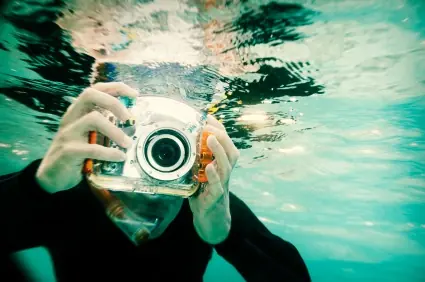
Shark sightings have been rampant for the past five years or so ? it seems that the nation has a bit of shark fever and that ocean-goers are much more prone to cry shark these days.
In April of 2008, triathlete Dave Martin was killed by a Great White off the coast of Solana Beach, California. In 2003, the famous up-an-coming pro surfer, Bethany Hamilton lost her arm to a Tiger in Kauai. In 2011, beaches in Cape Cod and San Diego were closed numerous times due to shark sightings. There have been over 20 reported shark attacks on humans who were fishing, open-water swimming, canoeing, wading, sea?kayaking, playing and surfing in the U.S.? so far this year.
White, tiger and bull sharks are the three biggest culprits and, even though the chances of an actual confrontation are rare, it is something that swimmers, triathletes who swim in open water, stand-up paddlers, surfers and sea kayakers all need to think about.
But before you create a massive media storm at the slightest ripple or dolphin fin, make sure you have your facts straight. And, speaking of dolphins, know the difference between a shark dorsal fin and that of Flipper.
So before you cry shark, research where you're planning to get in the water and exactly what to look for. Here are some things to keep in mind:
What Time of Day Is It?
Sharks most actively hunt at dawn and at dusk.?Plus, in?the dark, it's a lot harder to discern between you and Mr. Sea Lion, so wait to enter the water in clear, broad daylight.
Are You Near a River Mouth?
Sharks like to hang out where inland waters flow into the sea, because other fish like to hang out there waiting for food and debris?and smaller fish?enter in and out with the tide. If there have been shark sightings in the area, best to stay away from these spots.
Is There any Type of Reef or Underwater Structure Nearby?
Remember, "reef" doesn't always mean a tropical, coral paradise. Rock reefs, sunken ships, wreckages, kelp beds—heck, even a long jetty—all provide good structures for ecosystems to flourish. Plant life grows on these structures, organisms live off of the plant life, little fish live off of the organisms, bigger fish eat the little fish and even bigger fish eat them. It may sound like the makings of a Mother Goose nursery rhyme, but in reality it's just the way the food chain works.
Reefs, with all their little nooks, crannies and dark holes, also provide good hiding places for fish and crustaceans. But you can bet that some bigger fish are just hanging around these spots, waiting for some unsuspecting creature to venture out. Which brings us to our next tip:
Don't Ever Forget the Laws of the Food Chain
Bigger fish eat smaller fish. And even bigger fish eat big fish. Never forget that when you see some tiny fish being chased by another fish, there's a chance that an even bigger fish is on the hunt for that one, and so on and so forth. Signs to look out for:
1.?A lot of little fish jumping. When?entire schools of?fish are jumping all around you in the water, then you know that something is chasing them and that there's a lot of activity going on under the surface. The scariest park is that you most likely can't see what it's all about.
- 1
- of
- 2
Get ACTIVE on the Go


Meet Mobile
Swim smarter: heats, lane assignments and real-time results in the palm of your hand.
Available for iOS | Android



Discuss This Article